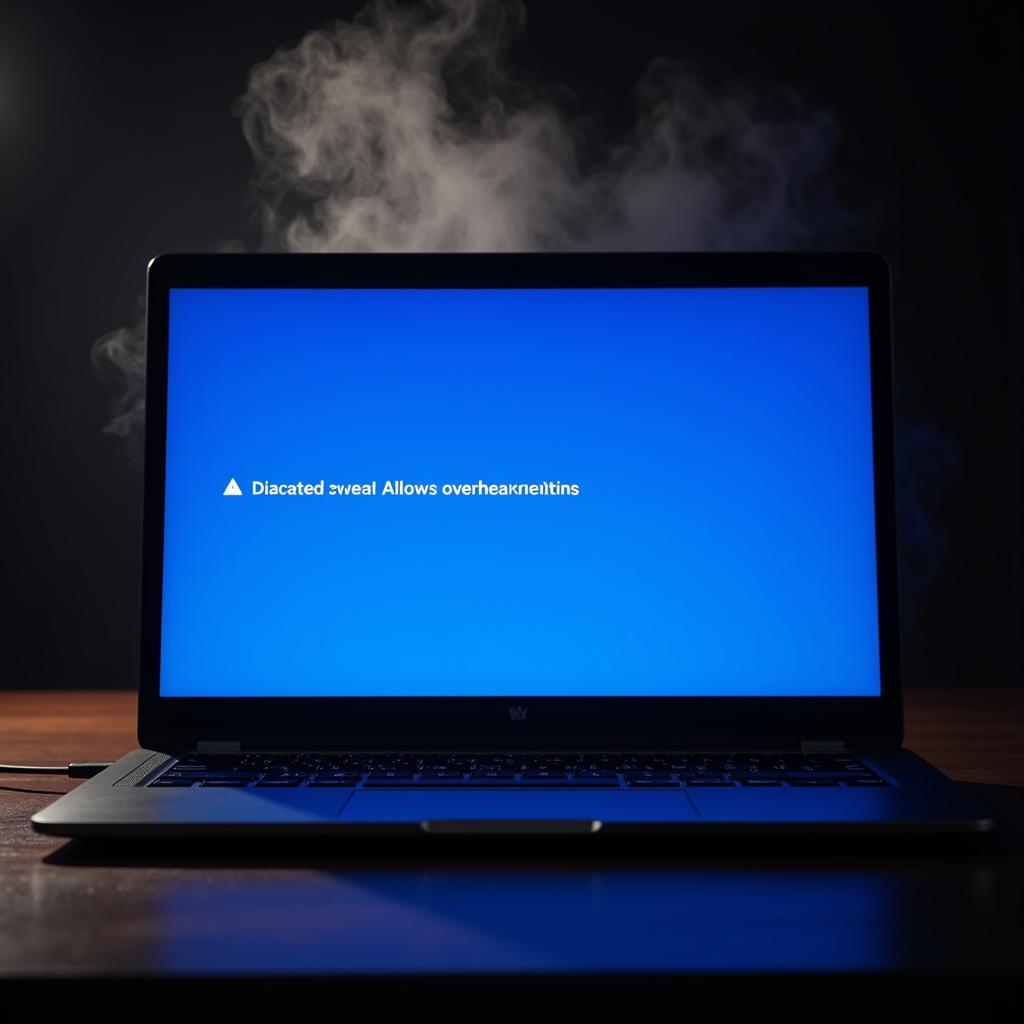Knowing how to Check Speed Fan Laptop is crucial for maintaining optimal performance and preventing overheating issues. Your laptop’s fan plays a vital role in dissipating heat generated by the processor, graphics card, and other components. When the fan speed is inadequate, your laptop may experience performance throttling, unexpected shutdowns, or even permanent hardware damage. This guide will walk you through various methods to check your laptop fan speed, understand its implications, and ensure your device runs smoothly.
Why Is Checking Laptop Fan Speed Important?
Before we delve into the “how,” let’s understand the “why.” Monitoring your laptop fan speed offers valuable insights into your system’s health and performance.
- Overheating Detection: A constantly high fan speed often indicates your laptop is struggling to stay cool. This could be due to demanding tasks, a dusty fan, or a failing thermal paste application.
- Performance Optimization: If you notice performance drops accompanied by loud fan noise, it suggests your laptop is throttling its performance to reduce heat generation.
- Hardware Longevity: Prolonged exposure to high temperatures can significantly reduce the lifespan of your laptop’s components.
 Laptop overheating warning signs
Laptop overheating warning signs
Simple Ways to Check Laptop Fan Speed
Fortunately, checking your laptop’s fan speed doesn’t require any special technical skills. Here are some straightforward methods:
1. BIOS/UEFI:
- Restart your laptop and press the designated key (usually F2, F10, or Del) to enter BIOS/UEFI settings.
- Look for a “Hardware Monitor,” “PC Health Status,” or similar section.
- You should find information about fan speed, often displayed in RPM (Revolutions Per Minute).
2. Third-Party Software:
- Several free and paid applications provide detailed system monitoring, including fan speed.
- Popular options include HWMonitor, SpeedFan, and Open Hardware Monitor.
- These tools offer real-time monitoring, historical data, and customizable alerts.
 Monitoring laptop fan speed with third-party software
Monitoring laptop fan speed with third-party software
Understanding Fan Speed Readings
Once you know how to check speed fan laptop, interpreting the readings is equally important. Here’s a general guideline:
- Idle (300-800 RPM): This is the typical fan speed when your laptop is idle or performing light tasks.
- Moderate Load (1000-2000 RPM): Expect the fan speed to increase as you run more demanding applications or games.
- High Load (3000+ RPM): Sustained high RPM indicates a heavy workload or potential overheating.
Note: Fan speed ranges can vary significantly depending on your laptop model, manufacturer, and cooling system design. Always refer to your laptop’s documentation for specific guidelines.
Troubleshooting High Fan Speeds
If you consistently encounter high fan speeds, consider these troubleshooting steps:
- Clean the Fan and Vents: Dust accumulation obstructs airflow, forcing the fan to work harder. Use compressed air to clean the vents and fan blades carefully.
- Reduce the Workload: Close unnecessary applications and tabs, especially when running demanding tasks.
- Use a Cooling Pad: External cooling pads provide additional airflow, helping to keep your laptop cool.
- Reapply Thermal Paste: Over time, the thermal paste between the processor and heatsink can degrade. Reapplying thermal paste can improve heat transfer and reduce fan speed.
Conclusion
Knowing how to check speed fan laptop is essential for any user. Regular monitoring allows you to identify potential issues early on, prevent overheating, and prolong the lifespan of your valuable device. By understanding the significance of fan speed and implementing appropriate troubleshooting steps, you can ensure your laptop runs smoothly and reliably for years to come.
FAQ
1. How often should I check my laptop fan speed?
It’s a good practice to monitor your fan speed periodically, especially during demanding tasks or if you notice unusual fan noise or performance drops.
2. Can I control my laptop fan speed manually?
Some laptops and third-party software allow manual fan speed control. However, it’s generally not recommended unless you have a thorough understanding of your system’s thermal management.
3. Is it normal for my laptop fan to be loud sometimes?
Yes, it’s perfectly normal for the fan to get louder when your laptop is under heavy load, as it needs to dissipate more heat. However, persistent and excessively loud fan noise could indicate an issue.
4. What should I do if my laptop overheats even after cleaning the fan?
If cleaning the fan doesn’t resolve the overheating issue, you may need to consider other solutions like reapplying thermal paste, using a cooling pad, or contacting a qualified technician.
5. How do I know if my laptop fan is failing?
Signs of a failing fan include grinding or clicking noises, erratic fan speed fluctuations, and persistent overheating even at idle. If you suspect a fan failure, it’s crucial to have it checked and replaced by a professional.
Need More Help?
If you have further questions or need assistance with checking fan speed dell laptop, checking laptop fan speed online, or understanding what ACPI fan is, don’t hesitate to reach out.
For specific inquiries on how to know fan speed of laptop or the intricacies of a cylindrical fan, our website offers detailed resources.
Contact our team at 0903426737, email us at fansbongda@gmail.com, or visit us at Tổ 9, Khu 6, Phường Giếng Đáy, Thành Phố Hạ Long, Giếng Đáy, Hạ Long, Quảng Ninh, Việt Nam. We’re here to help 24/7!


